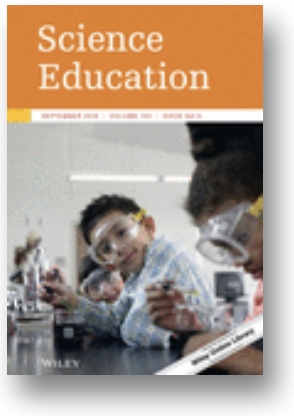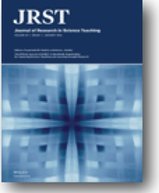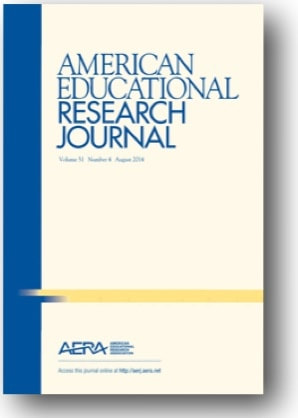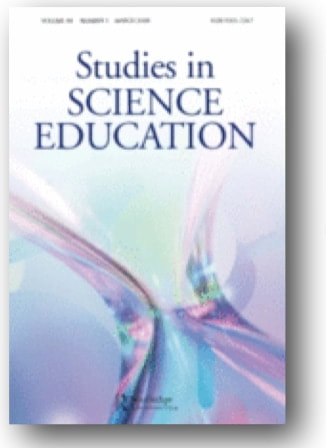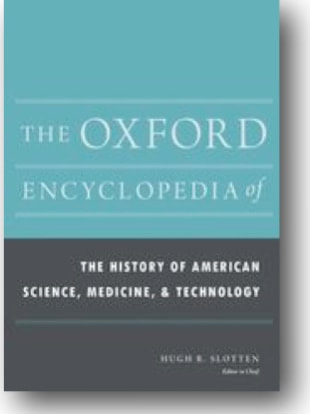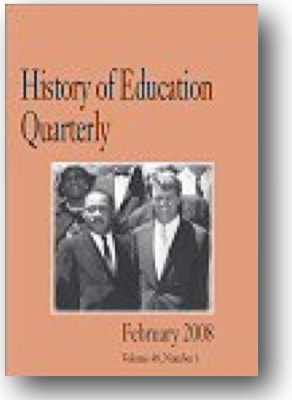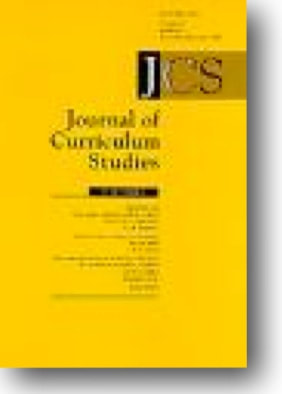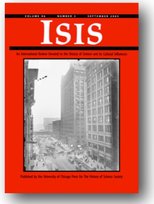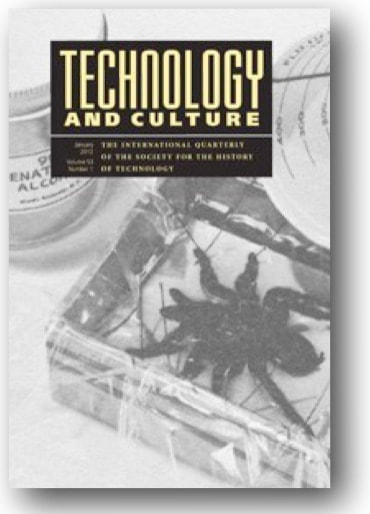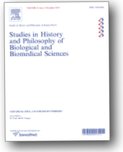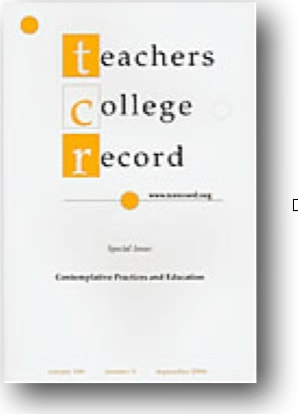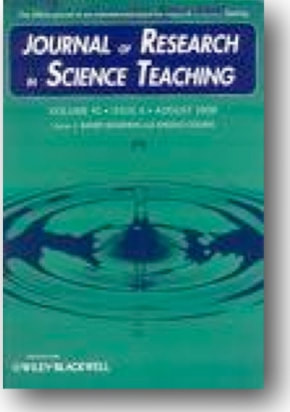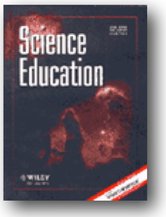|
“Scientific Literacy: Its Real Origin Story and Functional Role in American Education.” Journal of Research in Science Teaching https://onlinelibrary.wiley.com/doi/full/10.1002/tea.21890.
It has been widely accepted that scientific literacy was introduced by Paul deHart Hurd in 1958. Recent research into the origins of the phrase, however, have shown this is simply wrong. Its first published use can be traced back to 1945, and the phrase was frequently invoked in various publications throughout the 1940s and 1950s. Exploring the historical circumstances of the phrase’s introduction into popular discourse provides insight into how useful the idea actually is. “How Has Science Education Changed Over the Last One Hundred Years? An Analysis Using Natural Language Processing” (with Tor Odden and Alessandro Marin). Science Education 104 (2020): 895-906. For well over a century, the journal Science Education has been publishing articles about the teaching and learning of science. These articles represent more than just a repository of past work: they have the potential to offer insights into both the history of science education as well as well as the dynamics of field-specific change. We have used an automated machine-learning algorithm from the field of natural language processing to perform a literature review and classification of the corpus of work in Science Education and argue that this technique shows great promise for even larger-scale analyses of educational literature and other textual data. [Link] “The Lost Moral Purpose of Science Education.” Science Education 104 (2020): 895-906. Americans have advocated for the teaching of science at nearly every level of the educational system, though the reasons for its inclusion in schools have varied over the years. There was a period of time in the late nineteenth century when the predominant argument for science teaching rested on a moral purpose—the building of character and personal virtue. In this essay, Rudolph explores this past moral justification for the teaching of science and raises the possibility that such an argument might once again be relevant in our current era. [Link] “What Do We Mean by Science Education for Civic Engagement?” (with Shusaku Horibe). Journal of Research in Science Teaching 53 (2016): 805-820. One of the most frequently cited goals for science education over the years has been to provide students with the understanding necessary to engage in science-related civic issues. Despite the repeated insistence on the importance of this kind of democratic participation, there has been little effort in the research community to either define just what science-related civic engagement is. In this paper we offer a definition of science-related civic engagement drawing on work from the fields of philosophy and political theory. [Link] “Dewey’s ‘Science as Method’ a Century Later: Reviving Science Education for Civic Ends” American Educational Research Journal 51 (2014): 1056-1083. Dewey’s focus on method in science teaching was clearly aligned with broader purposes he envisioned for general education in science, and these purposes were concerned primarily with creating the circumstances necessary for widespread participation in the democratic processes of society in order to improve how we collectively live our lives. This ideal is in dire need of resurrection as we think about the proper role of science education a century after Dewey’s address. [Link] “Science Education in American High Schools” in The Oxford Encyclopedia of the History of American Science, Medicine, and Technology, edited by Hugh R. Slotten, 503-523. New York: Oxford University Press, 2014 [with David Meshoulam]. The history of education in American high schools is a story of continuous reform. Over the years, practitioners, researchers, and policymakers have advanced a variety of pedagogical and curricular innovations to remedy the deficiencies of those that were themselves once hailed as enlightened and innovative. The history of science education—since the appearance of science in high schools in the early 1800s—is no exception. [PDF] “Why Understanding Science Matters: The IES Research Guidelines as a Case in Point” Educational Researcher 43, no. 1 (2014): 15-18. The piece outlines the rise of a hard-science model advocated by the IES and describes its attraction for education policymakers. In the face of complex educational problems, such approaches seem to promise objective results, uniform solutions, and standardized interventions. This particular view of science, however, represents only a narrow slice of the myriad intellectual, social, and cultural practices that count. [Link] “Teaching Materials and the Fate of Dynamic Biology in American Classrooms after Sputnik” Technology & Culture 53 (2012): 1-36. This essay examines the competing epistemological visions underlying the laboratory materials produced by the Biological Sciences Curriculum Study (BSCS) on the one hand with those marketed by Ward’s Natural Science Establishment, one of the leading supply companies of the time. Juxtaposing the materials produced by these two groups enables us to see how different conceptions of scientific epistemology became reified in classroom apparatus. [Link] “Science Education: History at the Edge,” essay review for Studies in History and Philosophy of Biological and Biomedical Sciences 42 (2011): 270-273. The importance of education as a social and intellectual activity has often gone underappreciated (though not neglected entirely) in the history of science. Histories are undoubtedly richer as a result of attention to education, but they still give only a one-sided view: science education for the growth and maintenance of research groups. Largely neglected in the history-of-science-pedagogy renaissance, as Kathy Olesko has labeled it, is the consideration of how science education has operated for purposes other than technical reproduction... [Link] “Historical Writing on Science Education: A View of the Landscape,” Studies in Science Education 44, no. 1 (2008): 63-82. This article surveys historical scholarship on science education over the last 15 years and lays out a map of the different approaches to writing about this topic found in a variety of disciplines and fields. The hope is to provide scholars interested in science education a better understanding of how this enterprise has functioned in western culture, both in terms of training future scientists and managing the relationship between science and the lay public. [Link] “Turning Science to Account: Chicago and the General Science Movement in Secondary Education, 1905-1920,” Isis 96, no. 3 (2005): 353-389. In the second decade of the twentieth century a new subject appeared in American high schools, aimed at providing citizens with an understanding of the essential nature of scientific thinking. “General science,” as it was called, was developed and promoted by an emerging class of professional educators who sought to offer a version of science that they believed would both excite public interest and prove useful in the everyday lives of the masses of students streaming into the rapidly expanding institution of secondary education.... [Link] “Inquiry, Instrumentalism, and the Public Understanding of Science,” Science Education 89, no. 5 (2005): 803-821. This article examines two seemingly complementary trends stand out currently in school science education in the United States: the increased emphasis on inquiry activities in classrooms, and the emphasis on student understanding of the nature of science. The potential for public disengagement is described as a result of the continued juxtaposition of the two. An alternative way of thinking about science is offered that provides for a more authentic understanding of science, and also invites public participation in the governance of science in modern-day democratic society. [Link] “Epistemology for the Masses: The Origins of ‘The Scientific Method’ in American Schools,” History of Education Quarterly 45, no. 3 (2005): 341-376. Winner, History of Education Society - Best Article Prize, 2006 This article traces the origins of the commonly accepted, five-step scientific method to its source in the writing of John Dewey and his contributions to the reform of science education during the first decade of the twentieth century. I argue that the shift in views of scientific method—from a perspective rooted in formal logic to one derived from the new discipline of psychology and the ideas of Dewey—was catalyzed by the massive expansion of secondary education that occurred at the time. [Link] “Portraying Epistemology: School Science in Historical Context,” Science Education 87, no. 1 (2003): 64-79. Current debates over the nature of science in the school curriculum have centered on where the boundary between “traditional” science and other forms of knowledge should be drawn. What has been missing from these discussions, however, is a careful examination of how what lies within the boundary of “traditional” school science itself has been determined. Given the diversity of scientific practices and the inherent limitations of space in the curriculum, the portrayal of traditional science (its epistemology in particular) should be understood to be only a selective representation of the real-world practices of science.... [Link] “From World War to Woods Hole: The Use of Wartime Research Models for Curriculum Reform,” Teachers College Record 104, no. 2 (2002): 212-241. The curriculum reform movement that began in the late 1950s is widely viewed as the result of a broadly academic effort to restore disciplinary rigor to education in the United States. Much of the work that went on developing the new curricular materials and educational approaches, however, is better understood as an experiment in applying innovative research and development techniques perfected by scientists during World War II. This essay looks at the development of these newer methods of scientific analysis and examines how they were imported from the military research programs to the field of education by a select group of physicists... [Link] “Considering the Nature of Scientific Problems when Designing Science Curricula,” Science Education 85, no. 3 (2001): 207-222. (with Jim Stewart) A recurring theme of science education reform has been the creation of classroom opportunities that allow students to develop insights into the professional practice of scientists. The posing and solving of problems of a variety of types, a process central to scientific practice, provides a useful framework for structuring such opportunities for students.... [Link] “Reconsidering the ‘Nature of Science’ as a Curriculum Component,” Journal of Curriculum Studies 32, no. 3 (2000): 403-419. Although the nature of science has long been seen as an important, indeed central, component of science education during this century, efforts to integrate an authentic view of the nature of science into the curriculum have often met with little success. Work in the field of science studies since the 1960s has compounded this difficulty by presenting educators with various competing, often conflicting, views of the essence of scientific inquiry. I discuss previous attempts to come to grips with this fundamental issue of how to deal with the competing views of science and suggest an alternative approach for integrating nature of science issues into the school science curriculum.... [Link] “Evolution and the Nature of Science: On the Historical Discord and Its Implications for Education,” Journal of Research in Science Teaching 35, no. 10 (1998): 1069-1089. (with Jim Stewart) Research in the teaching and learning of evolutionary biology has revealed persistent difficulties in student understanding of fundamental Darwinian concepts. These difficulties may be traced, in part, to science instruction that is based on philosophical conceptions of science that are no longer viewed as adequately characterizing the diverse nature of scientific practice, especially in evolutionary biology.... [Link] |
